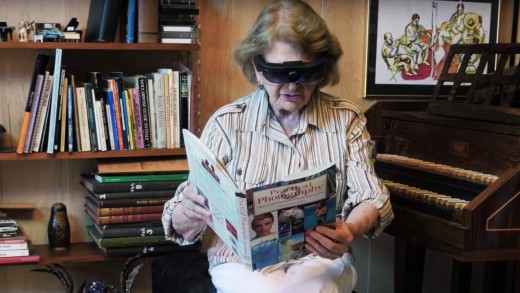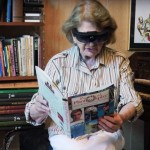How ODG’s good Glasses Can help The Visually Impaired
There are 285 million visually impaired people globally and Mark Greget and Justin Moore, the founders of the imaginative and prescient tech company NuEyes, saw an enormous potential trade if best they might provide you with a wearable technology in a position to serving to even a fraction of people who have trouble seeing.
For these whose ache is macular degeneration, a deterioration of the vital element of the retina that affects as many as 10 million american citizens, one of the crucial few to be had options has been a big, 50-pound computing device that electronically magnifies the phrases in the books and magazines they longed to read.
“folks [would] say, ‘that is nice, however why can’t any person make a pair of digital glasses that does the same thing?’” stated Greget, NuEyes’ CEO.

Greget isn’t the roughly man to ignore the sort of big chance. to start with he researched the market, after which performed around in his garage, trying to construct the glasses that patients were clamoring for himself. however development was once sluggish and fruitless and he notion possibly he may adapt one thing already available on the market. He didn’t to find any firms that could provide the answer.
“You’re telling them your use case,” Mark remembers, explaining that sufferers wish to “see a friend’s face, or learn a newspaper. [Companies] checked out me, announcing, ‘I don’t be mindful.’”
Then he met with a stealthy San Francisco tech company called Osterhout Design team, led by Ralph Osterhout, a man often called an electronics genius.
“the first time I met with ODG,” Greget says, “Ralph needed to satisfy with me and discuss with me, and it was wonderful. He bought it in 30 seconds.”
Ears, Eyes, And Mouth
For years, ODG had been developing quite a lot of applied sciences and in 2006, Osterhout determined to center of attention his company aggressively on head-borne computing, says Nima Shams, ODG’s vp of head-worn units. “The eyes, ears, and mouth,” Shams stated, “we wish to go after this.”
ODG is justifiably proud that it set up shop years in the past right in the midst of San Francisco’s tech group, bringing on eighty five workers, and making its good glasses for presidency, heavy trade, transportation, and oil and fuel customers proper on site. All with almost nobody even figuring out the corporate used to be there and, until not too long ago, with none outdoor buyers.
the company only formally announced it existed in 2015, a yr after it sold a large a part of its unique intellectual property portfolio to Microsoft for a reported $one hundred million to $a hundred and fifty million.
After the sale, ODG “reset the corporate,” says Shams, and excited about its subsequent products.
At CES in January, ODG unveiled the R-7, the corporate’s seventh-era instrument. hardly a pair of Warby Parkers, the $2,750 glasses are if truth be told a high-finish Android pill that you may put on, aimed at the endeavor market. companions like NuEyes are exactly what ODG has in thoughts.

Programmable with the aid of a variety of developers—via ODG APIs and an SDK—for a diverse set of purposes, a pair of R-7s are a great movie participant, an augmented-truth and digital-truth headset, and the kind of electronic glasses NuEyes’ customers have been anxious, all rolled into one.
each and every successive model of ODG’s glasses have gotten extra streamlined, best customers like BMW, Caterpillar, NASA, and plenty of others to get on board.
filled with Sensors
constructed to incorporate sophisticated sensors like gyroscopes, magnetometers, and accelerometers, in addition to the newest Wi-Fi, Bluetooth, and voice-reputation systems, a 4-megapixel digital camera, and global navigation satellite tv for pc system expertise, plus a powerful Qualcomm Snapdragon 805 processor, R-7 customers have a wealth of choices for what to do with the glasses.

that includes the usage of them as a digital truth headset, for the reason that glasses recognize where the person is popping his or her head, and because it’s imaginable for the reveal to robotically block all mild coming in from the skin, or as an augmented reality system that may superimpose all types of data over the consumer’s view. There’s also what Shams calls “assisted fact,” the place a user can, as an instance, look at any individual and have that individual’s bio pop up, or where the consumer will also be seeking to collect one thing, and directions mechanically appear on the monitor as a step-through-step guide.
still, the true magic, Shams says, is the R-7’s displays.
each lens options an independently pushed 720p lens able to displaying content material at 80 frames per 2d and with full 3-D visualization. yet as a result of these are glasses, the lenses had been designed to be 80% clear. “They’re like studying glasses,” Shams says. “You put on them and you see the actual world with digital content material superimposed on top.”
The Three Pillars
The R-7, and all ODG glasses that come after them, “stand on three pillars,” Shams mentioned. the first is immersive, cinema-high quality displays with no visible pixels, and real coloration. The second is full integration in the 5.5-ounce tool, that means no cables, no connection to an exterior pc, and no battery % required. And eventually, extreme mobility, he says, that means that the glasses are meant to be totally cellular, for use indoors or open air, whether or not it’s under a truck you’re repairing, or out on a sidewalk in vibrant sunshine.
Or which you could watch a movie on the R-7, and it’s the similar, in relation to how our eyes see it, of watching on a sixty five-inch HD reveal from eight feet away.
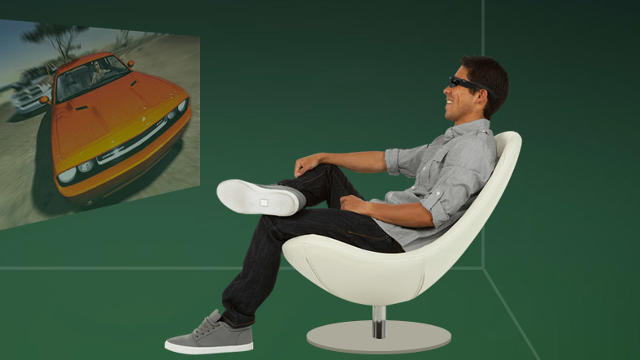
ODG developed its own Android-based operating system for the glasses, known as Reticle OS. “if you’re an Android developer, [your apps] just natively work,” Shams says.” Android is the most important community of developers in the market, so we needed to stand on the back of giants.”
That’s precisely what builders like NuEyes needed—the power to design as if for a tablet, however person who a visually impaired consumer would put on like glasses.
these suffering from macular degeneration combat with things like imperative-imaginative and prescient loss, requiring significant magnification in an effort to decipher issues like which letter of the alphabet they’re looking at.
For NuEyes, the R-7 provided the ability to present patients glasses with refined variable magnification and contrast adjustment.
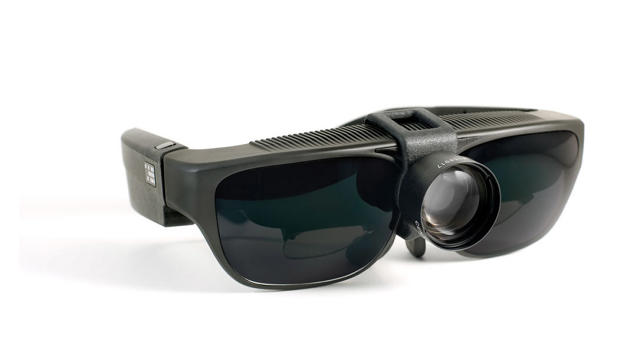
“When individuals grow old, they’ll have multiple eye concerns,” Justin Moore, NuEyes’ cofounder and COO says. “through having flexibility constructed into the glasses, which you could deal with a couple of [issues] with one item.”
NuEyes created proprietary instrument aimed toward addressing many low-vision sufferers’ concerns, and it used to be in a position to add that software to the R-7. That supposed its customers may take advantage of its know-how without needing a type of outdated 50-pound machines.
The tool has voice inputs, Greget explains, which lets customers speak their instructions to the glasses, things like making textual content bigger or smaller, or changing the colour. they are able to even say, “‘NuEyes, watch tv,’” he says, “and it’ll move tv” in a method that the customers can actually see.
greatly Customizable
for the reason that ODG glasses are greatly programmable, NuEyes has been in a position to tailor R-7s to deal with mild sensitivity by using offering the ability to head darkish on command. The glasses can also comprise telescopic lenses, which when used to enlarge something, don’t pixelate the content material, Greget says.
“That’s crucial for people who find themselves visually impaired,” Moore says. “If I’m a grandma, I wish to watch my grandkids play, or go to the flicks,” and the R-7 permits just that.
one in all NuEyes’ customers, a 95-12 months-outdated lady, simply wished to do one thing she hadn’t been able to do for years because of her situation.
“To her,” Moore recollects, “the most important factor was enjoying the piano.”
the girl additionally used to be desperate to take a look at artwork once more, and the glasses will allow her to do each those issues. “She’s just so excited to get these,” Moore says. “the first thing she’s going to do is go to the Getty” museum, in l. a., to see art she has by no means been in a position to in truth see.
There are other scientific functions for ODG’s glasses as smartly. doctors at hospitals like Johns Hopkins and Stanford are using them to help with processes like coronary heart surgical procedure, and some orthopedic surgeons are the use of the R-7’s augmented-truth instruments along side X-rays with the intention to regulate zoom and dimension and manipulate imagery that’s never been conceivable before, and all with out the use of their palms. In essence, Shams says, ODG’s glasses convey surgeons’ screens proper onto their head.
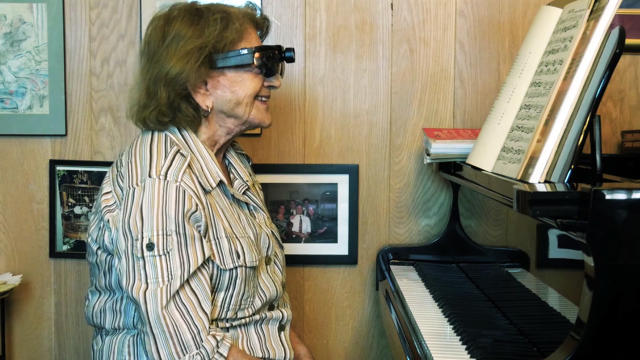
in a similar way, the glasses have been found to be best for airlines for in-flight emergencies, as a result of they offer doctors on board telepresence capabilities.
ODG’s glasses are additionally best for serving to field workers with fixing broken equipment or giving a box operator the ideas they want to function events repairs, says Michael Campbell, an government vice chairman at PTC, an enterprise instrument company that develops instruments for large industrial clients.
meanwhile, ODG is doing the whole lot it might probably to help increase sales of the R-7. One step has been to launch an app retailer for the Reticle OS, Shams mentioned, an Android-primarily based app center for people creating particularly for ODG’s hardware.
Shams notes that it’s important for builders so that you can customise their apps for Reticle OS. As an Android-based totally system, any app constructed for Google’s mobile OS will work on a pair of R-7s, “however in the event you optimize, it’ll be higher.”
Up subsequent: The R-8
And whilst ODG is busy selling the R-7, it’s already making progress on the following model of its glasses, the R-8.
One large difference with the subsequent version, Shams says, is that the tool will give a boost to the video viewing experience. where at present, looking at a movie or television exhibit on the glasses is the similar of being 8 ft far from a sixty five-inch HD monitor, with the R-eight it’s going to be like being in the best middle-row seat of a movie show.
ODG isn’t pronouncing when the R-eight shall be on hand, or how so much it is going to cost.

still, the ability to give customers an outstanding movie or tv watching expertise used to be indubitably the muse for what just lately was the first outside investment ODG has taken. In January, 21st Century Fox, by means of its Fox Innovation Lab—which is developing the Hollywood studio’s virtual reality initiatives, in addition to specializing in new television expertise—introduced it had made a strategic funding in ODG.
“Our settlement with ODG underscores the innovation we’re bringing to market through our Fox Innovation Lab, most recently with VR experiences for The Martian and Wild,” Jim Gianopulos, chairman and CEO of twentieth Century Fox movie, mentioned in a observation at the time. “We look ahead to partnering with ODG and serving as its lead out of doors investor as the ODG team pushes the movie expertise into the longer term with its high-definition, cinema-broad field of view technology.”
(203)

